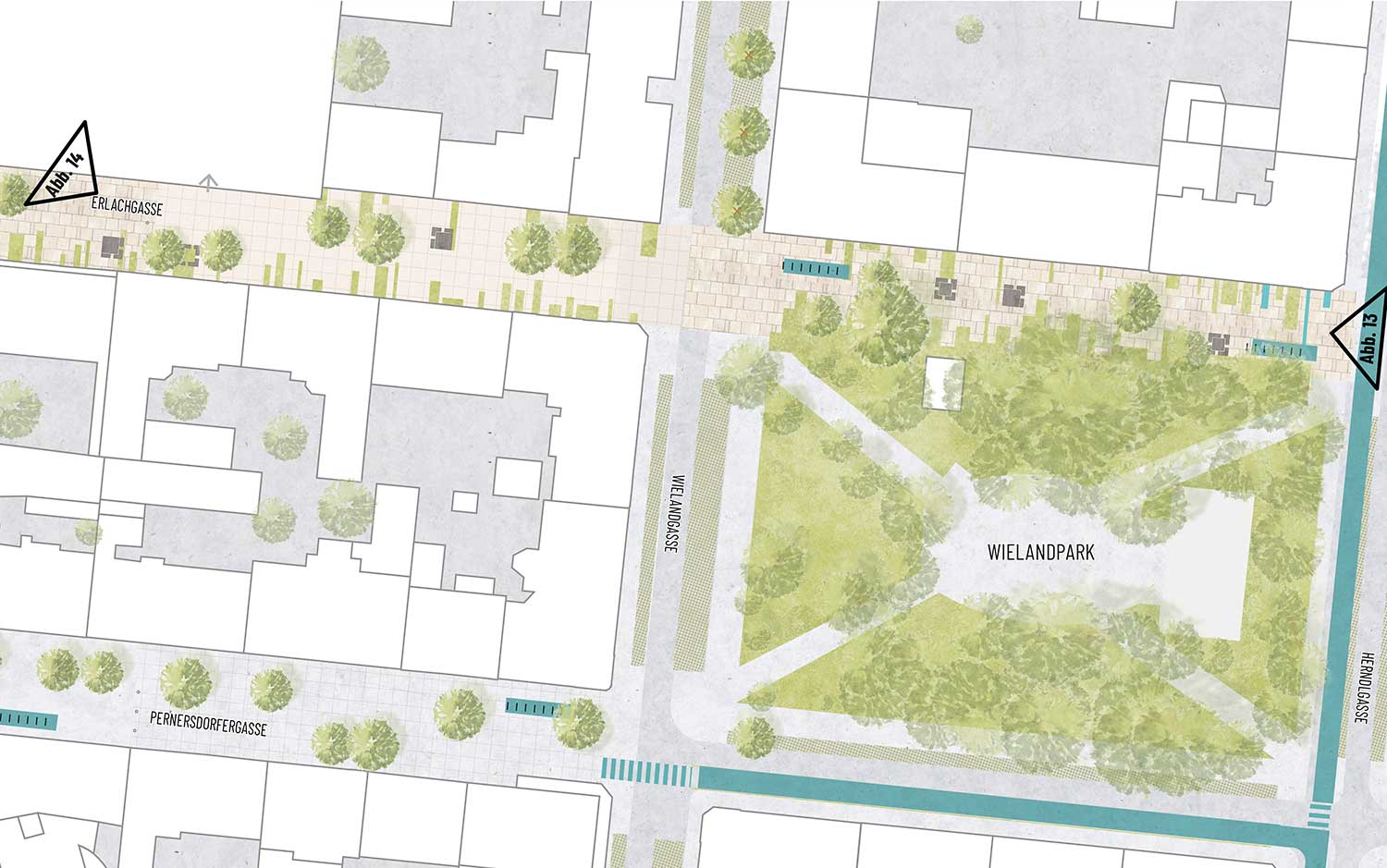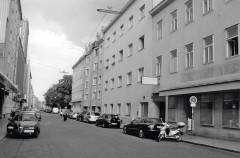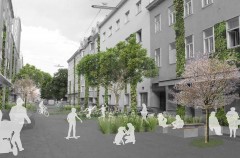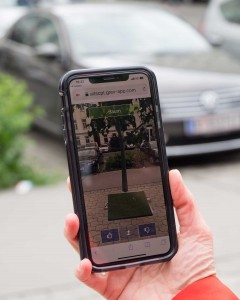In the project LiLa4Green, a research team led by the AIT Austrian Institute of Technology*, working together with city residents, is developing concepts and solutions for counteracting urban overheating in city districts. A green network of parks, green spaces and areas of water, facade greening and tree planting is intended to create “urban oases” and thus increase the quality of life on hot summer days.
Using the example of two existing urban areas in the 10th and 14th districts of Vienna, the aim is to investigate how so-called “Nature Based Solutions” (NBS) can be implemented in practice. The involvement and cooperation of residents plays a key role in this. The goal is to achieve a positive social effect and acceptance for the measures. User participation is facilitated with the help of innovative social-scientific methods in combination with the latest digital technologies. New forms of assessment (e.g. crowdsourcing) and visualisation (Augmented Reality) are also being tested.

„High temperatures and persistent heat are a source of stress, particularly for residents of urban areas. The city is warming up – green oases and urban areas of water can counteract this as a natural air conditioning system. Of course, awareness must first be raised amongst the public and decision-makers about these (simple) measures. In the project LiLa4Green, we pursue a holistic approach that combines scientific and social aspects with the latest digital technologies. This means we are bringing the topic of Greenness to the streets and to the public, by developing and implementing solutions together with the resident population in a ‘living laboratory’.“
Tanja Tötzer, Project Director of Lila4Green
AIT Austrian Institute of Technology
Interaction of buildings and open spaces
A functioning and coherent network of green and open spaces is important to keep the city properly ventilated. The density, in particular the relationship between the height of the buildings and the distance between them, determines how much sunlight penetrates an urban space and whether this space is able to cool down again at night.
Solutions from the Living Lab
In the Living Lab, various solutions, with and without a networked system of urban oases, are compared and discussed with residents and stakeholders. Apart from calculating the ecological and microclimatic impact of “Nature Based Solutions”, the costs and maintenance effort for the various measures are also being assessed. Measurements, simulations and surveys are to be carried out within the framework of a monitoring programme. The researchers also want to evaluate the social effects of these greening measures. The results of the investigations should subsequently be transferable to other Viennese districts and Central European cities.
https://lila4green.at/
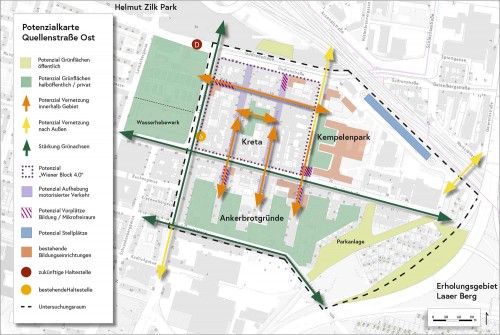
* Projektpartner
AIT Austrian Institute of Technology GmbH, TU Wien Institut für Städtebau, Landschaftsarchitektur und Entwerfen, Weatherpark GmbH Meteorologische Forschung und Dienstleistungen, PlanSinn Planung und Kommunikation GmbH, GREX IT Services GmbH, GrünStattGrau Forschungs- und Innovations GmbH (grünstattgrau.at)
